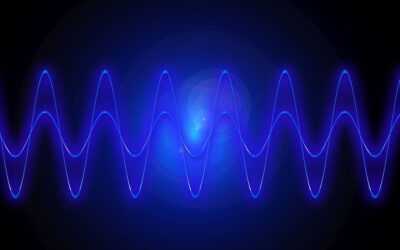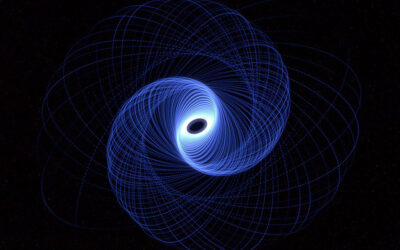Albert Einstein completed his work on the theory of general relativity in 1915 and since then it has been the foundation of our understanding of gravity. Einstein’s theory, which interprets gravity as a deformation of spacetime, was able to explain not only the physics of planets, stars, and galaxies, but the very evolution of the cosmos.
However, in order for general relativity to not contradict observational data that supports the accelerated expansion of the Universe, it is necessary to assume that the Universe is filled with a mysterious entity called dark energy, the origin of which is unclear and whose properties cannot be derived within the framework of Einstein’s theory.
Many scientists tend to believe that dark energy emerges due to the fact that, even in the vacuum of space, elementary particles are spontaneously born from nothing and then annihilate into nothing. The energy of this boiling soup of particles, also known as vacuum energy, is what drives the Universe’s expansion.
However, while this explanation is intriguing, it is problematic since the value of dark energy (the term in Einstein’s equations it leads to is known as the cosmological constant) derived from real observations is smaller than the theoretical estimate by dozens of orders of magnitude.
One proposed solution to this problem is that general relativity may need some tweaking, and there may be another theory that makes similar predictions about gravitational effects but differs when it comes to the value of dark energy.
Such a theory was first proposed by Einstein himself as early as 1919 and is called unimodular gravity. In this theory, the vacuum energy produced by the birth and death of particles cannot be dark energy, meaning no contradiction between theory and experiment if this approach to gravity is correct.
Thus, unimodular gravity may be a more promising candidate, but are there also good theoretical reasons for choosing this theory over one so well-established as general relativity?
String theory could be a solution
To answer this question, Professor Frans Klinkhamer of the Karlsruhe Institute of Technology in Germany has approached this problem from the perspective of string theory, which is a promising candidate for describing particle interactions at their most fundamental level.
In a recent study published on the e-print archive arXiv.org, Klinkhamer analyzed the interaction of gravity with matter in a formulation of string theory known as matrix theory.
With this approach to the physics of elementary particles, the concepts of space and time turn out to be approximations to more fundamental entities, just as the smooth surface of a liquid actually consists of individual molecules and when viewed under a powerful microscope looks completely different from the zoomed out classical picture. Mathematically, the theory is described by very large two-dimensional arrays of numbers called matrices, hence the name.
“It has been argued that the matrix model can give rise to some type of spacetime lattice and an emergent spacetime,” said Klinkhamer in the pre-print article. “We intended to show that this matrix model approach can also provide a possible explanation of nonstandard [interactions of gravity and matter].”
According to this theory, the classical picture of spacetime we are used to in relation to general relativity is applicable only on scales larger than the Planck length — a length scale that is roughly 20 orders of magnitude smaller than the size of an atom and the typical scale at which quantum effects in gravity are expected to become important.
Klinkhamer was able to numerically derive approximate equations for how gravity interacts with matter from matrix theory and found that they resembled the equations of unimodular gravity more so than those of general relativity.
Despite the intriguing result, the author notes that it is still preliminary and a more detailed analysis is needed. In particular, the numerical methods used in the present study are not powerful enough to obtain the exact value of the cosmological constant, although they did make it possible to explain why it is not inexplicably large.
“Much remains to be done,” said Klinkhamer in an e-mail. “For example, it would be great to get our solution of the equations of matrix theory analytically, and not just numerically.”
Hopefully, further work on this topic will solve these problems and will shed light on both the properties of fundamental interactions on the smallest of scales as well as cosmic phenomena on the scales of the entire Universe.
Reference: F.R. Klinkhamer, Emergent gravity from the IIB matrix model and cancellation of a cosmological constant, [arXiv:2212.00709]; F.R. Klinkhamer, Extension of unimodular gravity and the cosmological constant, Phys. Rev. D (2022), DOI: 10.1103/PhysRevD.106.124015.
Feature image credit: NASA

















